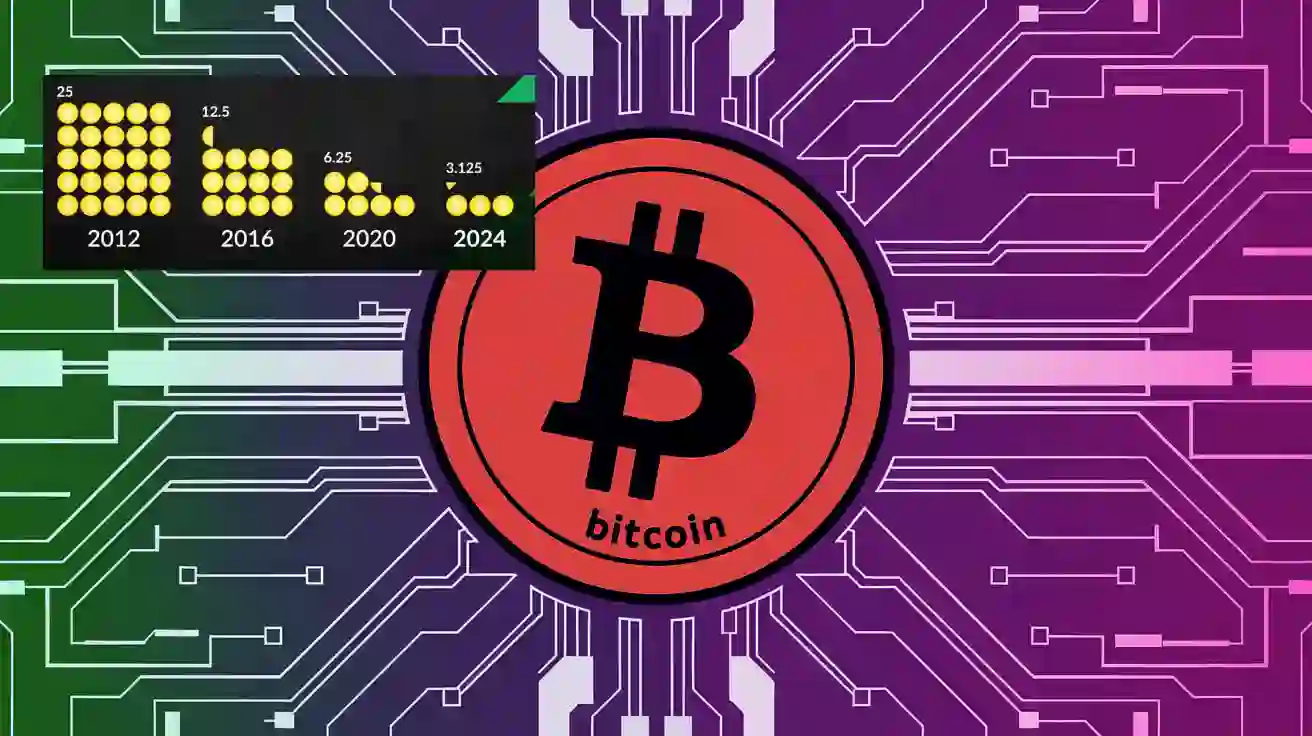Every four years, Bitcoin undergoes a significant event that changes the way new coins are introduced into circulation—this is known as the Bitcoin halving. The halving reduces the rewards given to Bitcoin miners, effectively slowing down the rate at which new BTC enters the market. But why does this happen, and how does it impact Bitcoin’s supply, price, and miners? Let’s dive into the details.
Understanding Bitcoin’s Limited Supply
To grasp the importance of Bitcoin halving, we first need to understand how Bitcoin’s supply works. Unlike traditional fiat currencies such as the U.S. dollar, Bitcoin has a fixed supply limit of 21 million coins. This built-in scarcity is one of the key reasons Bitcoin is often compared to gold.
The idea of scarcity creating value isn’t new. Precious metals like gold and silver have historically been used as stores of value precisely because they are limited in nature. Similarly, Bitcoin’s creator, Satoshi Nakamoto, designed the cryptocurrency with a predetermined supply limit to prevent inflation and maintain its value over time.
In contrast, traditional currencies can be printed by governments at will, leading to inflation and devaluation. Over the years, many central banks have increased the money supply to respond to economic crises, such as the Great Depression and financial downturns. Satoshi Nakamoto saw this as a major flaw in traditional financial systems and aimed to create a decentralized, deflationary asset that could not be manipulated by any single entity.
What Is the Bitcoin Halving?
The Bitcoin halving is a built-in event in Bitcoin’s code that occurs approximately every four years. This event reduces the number of new Bitcoin entering circulation by cutting mining rewards in half.
Bitcoin miners play a crucial role in securing the network and verifying transactions. In return for their efforts, they are rewarded with newly minted Bitcoin. However, with each halving event, these rewards are slashed by 50%. This process continues until the maximum supply of 21 million BTC is eventually reached, estimated to happen around the year 2140.
Key Facts About Bitcoin Halving:
- It happens roughly every four years or every 210,000 blocks.
- The process will continue until the last Bitcoin is mined in 2140.
- By reducing new Bitcoin supply, halving events contribute to Bitcoin’s scarcity, potentially affecting its price.
A Timeline of Bitcoin Halving Events
Bitcoin has experienced several halving events since its inception in 2009, each one reducing the block reward for miners:
- 2009: Bitcoin launched with a block reward of 50 BTC per block.
- 2012: The first halving reduced rewards to 25 BTC per block.
- 2016: The second halving brought rewards down to 12.5 BTC.
- 2020: The third halving cut rewards further to 6.25 BTC.
- 2024: The fourth halving, which took place on April 19 or 20 (depending on the time zone), reduced rewards to 3.125 BTC per block.
- 2028: The fifth halving is expected to take place, bringing mining rewards down to 1.5625 BTC per block.
By the time the final Bitcoin is mined in 2140, there will be no more new Bitcoin entering circulation. Instead, miners will rely on transaction fees to sustain their operations.
To be clear, I strongly believe in crypto, but it can’t drive a massive increase in fossil fuel use, especially coal
— Elon Musk (@elonmusk) May 13, 2021
Why Is the Bitcoin Halving Important?
Bitcoin’s halving events are crucial because they directly impact the supply and demand dynamics of the cryptocurrency. With each halving, the supply of new Bitcoin entering the market decreases, making BTC more scarce over time. If demand remains strong or increases, this scarcity can drive up Bitcoin’s price.
Additionally, Bitcoin’s halving plays a major role in maintaining its decentralized and trustless nature. Unlike fiat currencies, where governments and central banks can manipulate monetary policy, Bitcoin’s monetary system is hard-coded and resistant to change. This ensures that no single entity can control its supply, making it a unique form of “hard money” comparable to gold.
How the Halving Affects Bitcoin Miners
Miners are the backbone of the Bitcoin network, dedicating computational power to validate transactions and maintain the blockchain. However, when the block rewards are halved, it impacts their profitability.
Mining Bitcoin requires expensive hardware and significant energy consumption. With rewards decreasing every four years, miners must adapt in various ways:
- Increased Efficiency: Miners need to upgrade their equipment to more efficient machines that consume less power while providing higher processing power.
- Higher Transaction Fees: Since the block rewards will eventually disappear, miners will increasingly rely on transaction fees to sustain their operations.
- Mining Consolidation: Smaller or less efficient miners may be forced to exit the industry, leading to a concentration of mining power among large-scale mining firms with better resources.
Following the 2024 halving, miners collectively mint about 428 BTC per day (around $28.3 million at the time) but earn between 60 and 100 BTC ($3.9 million to $6.6 million) in daily transaction fees. As halving events continue, transaction fees will become an even more critical component of mining revenue.
Will Bitcoin’s Reward System Change?
Some industry experts have debated whether Bitcoin will eventually transition to a different consensus mechanism, such as proof-of-stake (PoS), to reduce energy consumption.
Ethereum, the second-largest cryptocurrency, transitioned from proof-of-work (PoW) to PoS in 2022, drastically reducing its energy usage. PoS systems secure the network by having participants “stake” their cryptocurrency as collateral rather than relying on energy-intensive mining.
However, Bitcoin’s network is deeply rooted in PoW, and many Bitcoin advocates argue that switching to PoS would undermine Bitcoin’s core principles of decentralization and security. The likelihood of Bitcoin adopting PoS remains low, as it would require significant support from miners, developers, and the broader Bitcoin community.
When Is the Next Bitcoin Halving?
The next halving is expected to occur in 2028, but the exact date is unpredictable. Bitcoin halvings take place at a fixed block height rather than a specific date, meaning fluctuations in network activity can slightly shift the expected timeline.
Bitcoin blocks are mined approximately every 10 minutes, but during periods of high demand, the process can speed up, bringing the halving date closer. Conversely, if mining slows down, the event may be delayed slightly.
As 2028 approaches, analysts will refine their predictions for the exact timing of the next halving.
How Does the Bitcoin Halving Impact Price?
One of the biggest questions surrounding each halving event is its effect on Bitcoin’s price. The relationship between halvings and price increases is a topic of ongoing debate.
Past Halving Price Movements:
- 2016 Halving: Bitcoin’s price was around $660 at the time of the event. It remained relatively stable for months before surging to over $20,000 by the end of 2017.
- 2020 Halving: Bitcoin traded at about $9,000 before the event. By the end of 2020, it had climbed to over $27,000, with further gains in 2021 pushing it past $60,000.
- 2024 Halving: Unlike previous cycles, Bitcoin had already reached an all-time high of over $73,000 a month before the halving.
Some analysts believe that halvings “price in” long before they occur, meaning traders anticipate the event and buy Bitcoin in advance. Others argue that halvings create long-term scarcity, leading to price increases over time rather than immediately after the event.
Bitcoin Halving and Institutional Adoption
The 2024 halving happened under different circumstances compared to previous ones. For the first time, Bitcoin spot ETFs were approved in the U.S., allowing institutional investors to gain exposure to Bitcoin without directly holding the asset. This development significantly boosted demand, making the 2024 halving unique compared to past events.
Major financial firms, including BlackRock, Fidelity, and Ark Invest, now offer Bitcoin ETF products, increasing mainstream adoption. Institutional inflows into Bitcoin ETFs could further impact Bitcoin’s price trajectory in the years following the halving.
Final Thoughts
Bitcoin halvings are one of the most important events in the cryptocurrency’s lifecycle. By reducing the rate of new Bitcoin creation, these events reinforce Bitcoin’s scarcity, potentially driving up its value over time.
While halvings impact miners, investors, and the broader market, they ultimately uphold Bitcoin’s fundamental principle—a decentralized, predictable monetary system beyond the control of any government or institution.
With the next halving set for 2028, the question remains: How will Bitcoin’s price, adoption, and mining ecosystem evolve in the years to come? Only time will tell.


